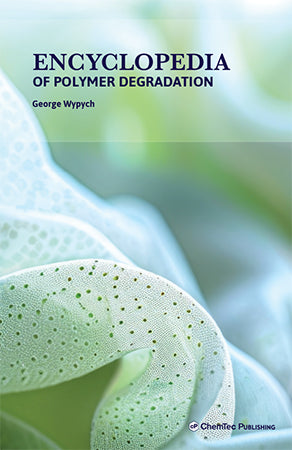Only a few books were ever published on rheological modifiers, with the last one published 20 years ago. This book contains all relevant research data on the subject available to date, and it is published together with the Databook of Rheological Additives, including data on commercial and generic additives used in the end-products available in the market.
More than 30 inorganic and organic groups of chemical compounds are in everyday use as rheological additives. These are characterized in tabular form in a special chapter designed for easy comparison of their main properties.
The following chapters of the Handbook discuss the essential theoretical knowledge required for proper selection and use of rheological additives. These include fundamental principles of rheology in relation to the application of rheological additives, the mechanisms of action of rheological additives, their effective methods of incorporation, and measuring techniques used in their assessment.
Application aspects and selection of additives are discussed in separate sub-chapters devoted to 45 different polymers and 36 different groups of products. Here extensive use is being made of patent literature and research papers available for various applications. Discussed are also polymer processing methods that require rheological agents.
The book was designed with the following industries in mind, including coatings & paints, adhesives & sealants, cosmetics (personal care), household products, pharmaceutical, mortars, agriculture, cementitious products, various polymer processing methods (e.g., knife coating, dip coating, injection molding extrusion, rotational molding, etc.), printing inks, greases, lubricants, drilling fluids, oil spills, foam stabilization of surfactant systems, explosives, paper coatings, wood finishes, leather coatings, textile sizing, rubber industry, food products.
Introduction
2 Properties of Rheological Additives
2.1 Cellulose derivatives
2.2 Fat and oil derivatives
2.3 Inorganic
2.4 Polymers
2.5 Polysaccharides
2.6 Protein
3 Some Rheology Principles
4 Mechanisms of Action of Rheological Additives
4.1 Gelling
4.2 Egg-box model
4.3 Domain model
4.4 Fibril formation
4.5 Adsorption mechanism
4.6 Network formation
4.7 Thermogelation
4.8 Hydration mechanism
4.9 Interaction
4.10 Order-disorder and hydrocluster formation
4.11 Hydrogen bonding
4.12 Effect of low temperature on the mechanism of action of rheological additives
5 Effective Methods of Incorporation
6 Analytical Methods in Application to Rheological Additives
6.1 Shear & oscillatory rheometry
6.2 Extensional rheology
6.3 Zeta potential
6.4 Particle size analysis
6.5 General methods
7 Rheological Additives in Different Polymers
7.1 Alkyd resins
7.2 Cellulose acetate
7.3 Chlorobutyl rubber
7.4 Cyclic olefin copolymer
7.5 Cyanoacrylate
7.6 Poly(ethylene-co-methyl acrylate)
7.7 Epoxy resin
7.8 Ethylene-propylene-diene monomer
7.9 Liquid crystalline polymers
7.10 Polyamide
7.11 Poly(acrylic acid)
7.12 Polyacrylamide
7.13 Polyacrylonitrile
7.14 Polyaniline
7.15 Polybutadiene
7.16 Poly(butylene terephthalate)
7.17 Polycarbonate
7.18 Poly(-caprolactone)
7.19 Polydicyclopentadiene
7.20 Polylysine
7.21 Polydimethylsiloxane
7.22 Polyethylene
7.23 Poly(3,4-ethylenedioxythiophene)
7.24 Polyetheretherketone
7.25 Perfluoropolyether
7.26 Polyhydroxybutyrate
7.27 Poly(lactic acid)
7.28 Polymethylmethacrylate
7.29 Polypropylene
7.30 Polypropylene glycol
7.31 Polyphenylsilsesquioxane
7.32 Polyphenylenesulfone
7.33 Poly(p-phenylene terephthalamide)
7.34 Polypyrrole
7.35 Polystyrene
7.36 Polytetrafluoroethylene
7.37 Polyurethane
7.38 Polyvinylacetate
7.39 Polyvinylalcohol
7.40 Polyvinylchloride
7.41 Poly(vinylidene fluoride)
7.42 Polyphosphazene
7.43 Poly(styrene-co-acrylonitrile)
7.44 Urea-formaldehyde resin
7.45 Unsaturated polyester
8 Use in Products
8.1 Abrasives
8.2 Adhesives & sealants
8.3 Agricultural products
8.4 Animal feed
8.5 Automotive
8.6 Binders
8.7 Cables
8.8 Casting
8.9 Cementitious products
8.10 Ceramics
8.11 Coatings & paints
8.12 Coil coating
8.13 Composites
8.14 Cosmetics
8.15 Explosives
8.16 Foams
8.17 Food products
8.18 Gels
8.19 Grease
8.20 Hand sanitizers
8.21 Inks
8.22 Leather coating
8.23 Lubricants
8.24 Medical
8.25 Oil well drilling
8.26 Papermaking
8.27 Personal care products
8.28 Pharmacological preparations
8.29 Primers
8.30 Roofing products
8.31 Rubber industry
8.32 Space
8.33 Stucco
8.34 Toners
8.35 Water treatment
8.36 Wood finishes and adhesives
Index




